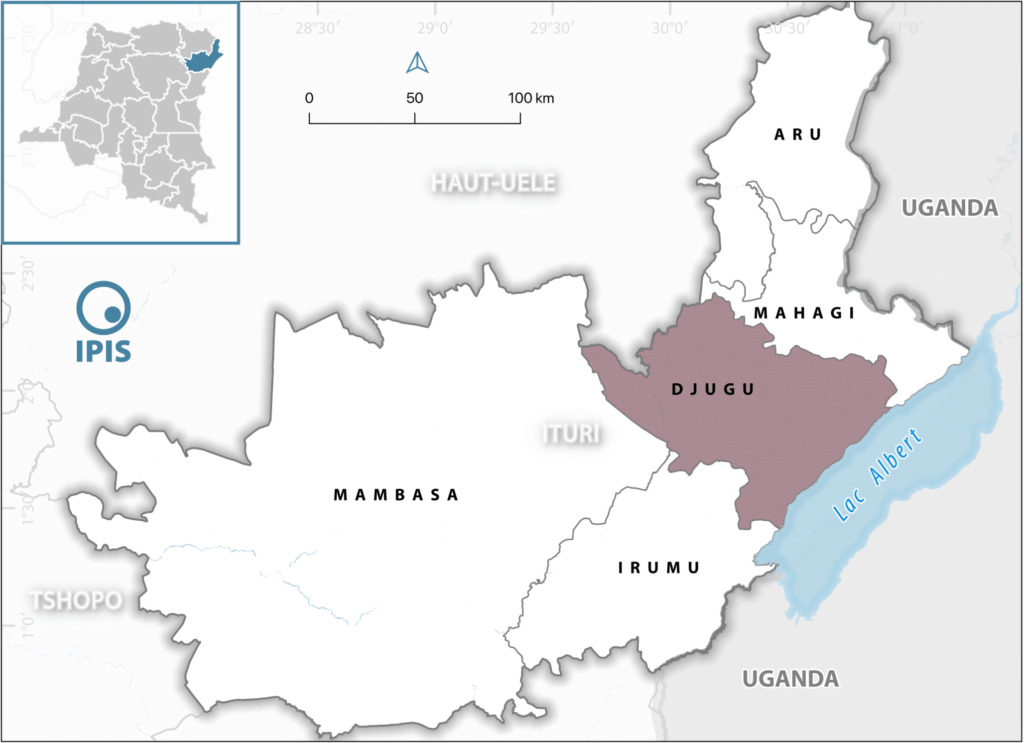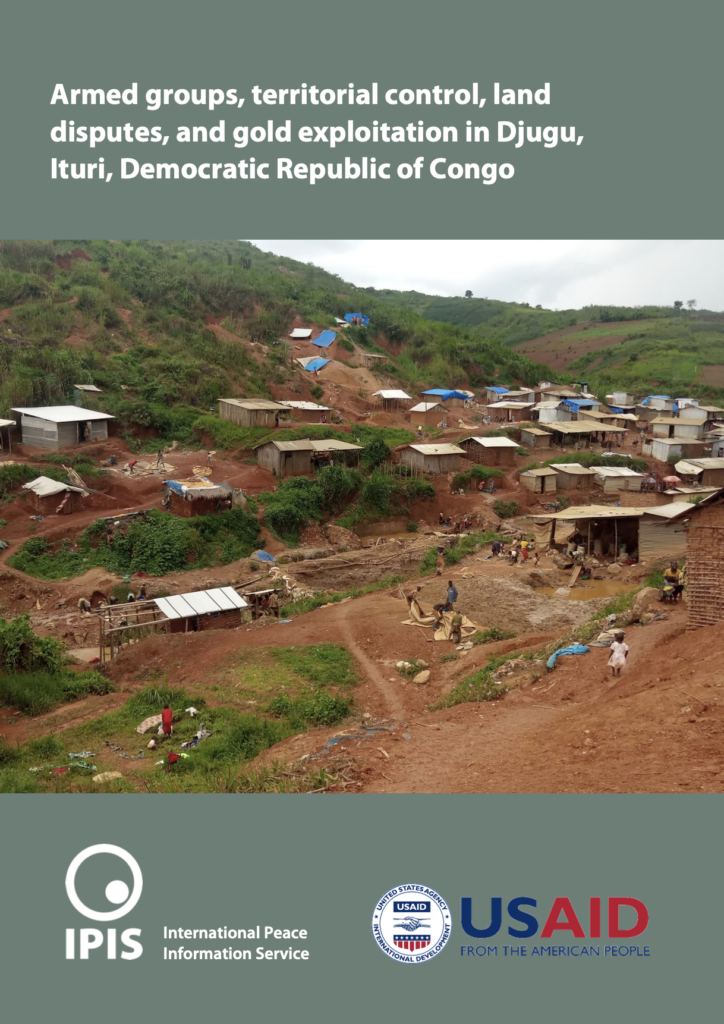In late 2017, almost fifteen years after the end of the second Congo war, and after several years of relative peaceful coexistence, inter-communal tensions flared up once again in Ituri province, in eastern Democratic Republic of Congo (DRC). In December 2017, isolated violent incidents between members of the Hema and Lendu communities provoked an escalation and heralded the beginning of a new cycle of deadly violence and large-scale internal displacements. In 2021, the persistent violence in eastern DRC, particularly in the provinces of Ituri and North Kivu, led the DRC government to impose ‘martial law.’

This report investigates the link between the exploitation of gold in Djugu territory in the province of Ituri, and the current conflict. It addresses the question of whether the current conflicts in Ituri province result from competition over mineral resources, or is the presence of gold mines rather an opportunity to finance war efforts? Although nowadays gold does not seem to be the prime cause of conflict, it is becoming increasingly an important asset in the survival strategies of armed groups.
Two important contextual elements in Djugu should be highlighted: the economic importance of gold mining and the importance of ethnicity in the local administration. Today’s armed conflict in Djugu, Ituri, however, was not caused by competition for control over gold. Hostilities started in 2017-2018 in agricultural and livestock farming areas where few mining sites are located, and only moved towards gold mining zones at a later stage of the conflict. Armed groups moved gradually into Djugu’s mining areas as the conflicts persisted. CODECO did so in search of new resources as part of their survival strategy, whereas the self-defence groups Jeunesse/’Zaïre’ wanted to protect land and mining sites that they consider as part of their community’s patrimony against the aggression of CODECO.

This report explains crucial elements that help to explain the persistence of the conflict and that downplay the role of gold to a certain extent. Land issues form the basis of long-lasting tensions between communities in Ituri. Seemingly trivial disagreements have shown the potential to deteriorate into violence. Violence has especially, but not solely, been observed in the enclosed zones (part of a territorial patchwork, metaphorically referred to as “skin of the leopard”), whose limits are constantly disputed. Land ownership, customary land rights, and access to land in general are key drivers of conflict. Mining is also intrinsically linked to the land issue and the nexus between gold and conflict is therefore inseparable from it.
Report findings:
- Gold is not the root cause of the current conflicts in Ituri but is nevertheless an important asset in the survival strategies of armed groups.
- Unaddressed historical grievances about social inequalities and land rights have contributed to long-lasting divisions between communities, which eventually deteriorated into inter-communal violence.
- The Congolese government’s response to the violence, namely imposing martial law, did not restore peace and stability in Ituri province. To build sustainable peace the government will need to deal fundamentally with the issues underlying people’s grievances.
In conclusion, the current conflicts seem to be rooted in a complex web of long-standing community grievances about real or perceived social inequalities, unequal access to land, and political power distributions that are perceived as unfair. Gold mining and access to other natural resources are not the primary causes of the present-day conflicts, but have increasingly become crucial assets in the survival strategies of armed groups who continue to destabilize the province. The fact that inter-communal tensions flared after several years of relatively peaceful coexistence, rapidly deteriorating into large-scale inter-communal violence, is a matter of serious concern, indicating that unresolved disputes have been simmering for a long time and that long-lasting peace will not return unless fundamental local issues linked to land access, customary authority, mining governance, and social and political inequalities between communities are dealt with, or at least have been put on the agendas of local and national governments.



